Owen Braekke-Carroll began his career in visual effects in 2011 at Rising Sun Pictures, and also worked at Animal Logic before joining Framestore in London in 2013. He has worked on various shows including The Martian, Thor: Ragnarok, The Witcher and Lovecraft Country.
What is your background?
Originally from Australia, in 2013 I moved to the UK to work in the compositing department at Framestore film. After some years I was excited by the developing world of high end television visual effects, and in 2018 shifted to work in the then nascent Episodic division. Since then I have been involved in a variety of roles and projects, including The Boys, The Witcher and Lovecraft Country. Prior to Invasion I was working as the overall show supervisor on the HBO/Sky co-production The Baby.
How did you and Framestore get involved on this show?
Framestore’s fantastic Art Department and visual development teams had been contacted early in the process to help define the look and scope of this new creature, the alien Entity. Erik Henry (client VFX supervisor) and showrunner (SK) had a desire to explore and get creative in trying to make a new type of creature that really felt ‘alien’, and explore the possibilities and creative ideas around something that perhaps existed a little bit outside of, or bent our conventional rules of physics.
The Framestore VisDev team collaborated closely with Erik on this and came up with some very striking designs and movement to form as the creative base for the creature. It was at this point that they passed these images off to me and the London team, and we began to work on extending these original ideas into a full creative and visual language for the Entity.
One of the great parts of this process, beyond the initial creative shaping of the concepts, was that Framestore were able to provide a variety of visuals/colour reference to use in context on set. These were then able to drive LED panels on-set. Considering the emissive and colourful nature of the final creative, this was a fantastic help for those on-set and in post.
How was the collaboration with the showrunners and VFX Supervisor Erik Henry?
Erik is a fantastic supervisor who draws on a wealth of experience and knowledge. I admire his pragmatic approach to telling the story, and always is focused on what the VFX are adding to the narrative. Initial lookdev and discussions inevitably drew comparisons between the Entity and the water pseudopod from James Cameron’s The Abyss – which of course Erik had the insight on, having worked on that very movie! Framestore was given a great degree of creative freedom and input into the process, and we were able to pitch and develop a wide variety of ideas and solutions to the creature. It was a great process.
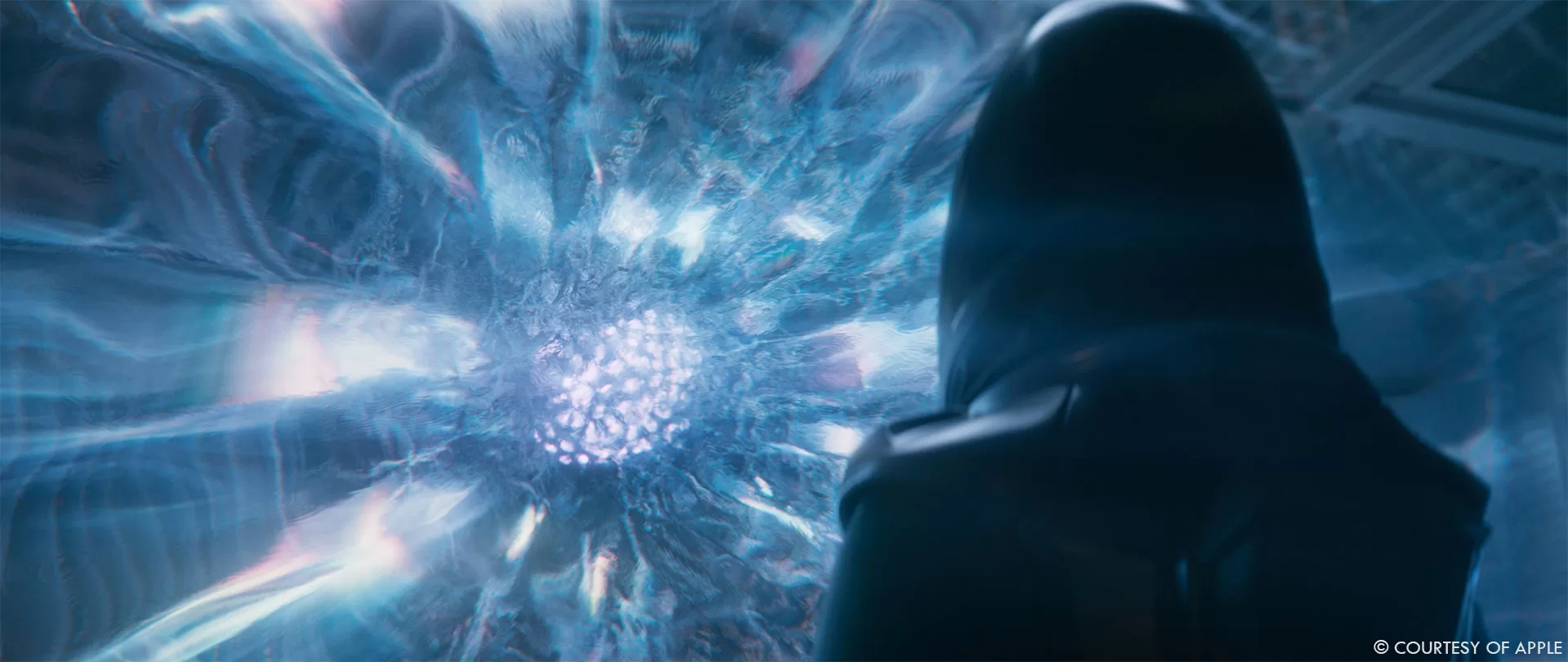
How did you organize the work with your VFX Producer?
The design and interactions the Entity went through were constantly evolving – meaning that the asset and tools used to create it were also constantly changing. Scheduling and organization-wise this meant that we had to continue our look development and FX development all the way throughout production – working almost up until the final pixels went out the door. Sean Francis, the Framestore VFX producer managed to find a way to maximise this and try to avoid any bottlenecks in delivery.
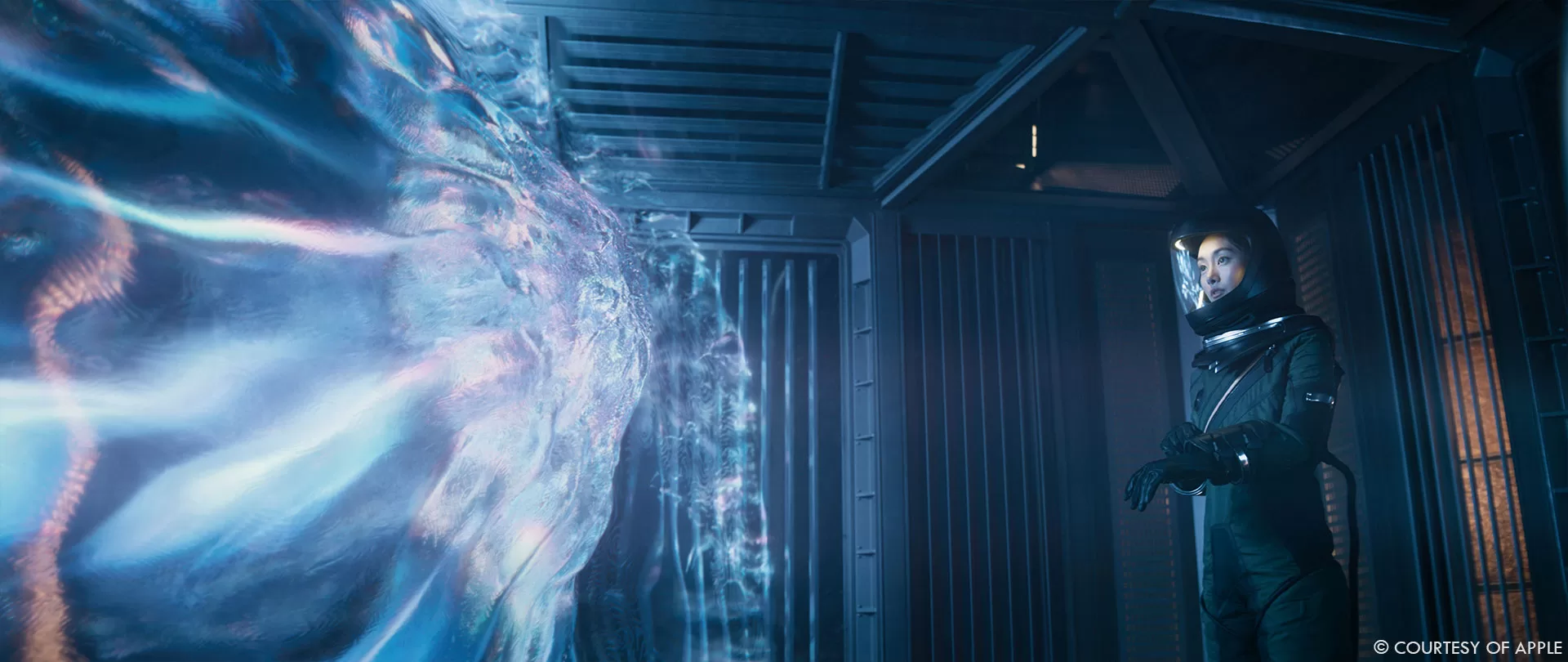
How did you split the work amongst the Framestore offices?
Framestore London took on the body of work relating to the Alien entity, the surrounding areas of Misuki’s storyline, and the climactic scenes in Idabel at the close of Episode 10.
Framestore New York completed the dramatic tunnel escape and set extensions in Episode 4, and the complex bioluminescent visions Mistuki experiences in Episode 8.
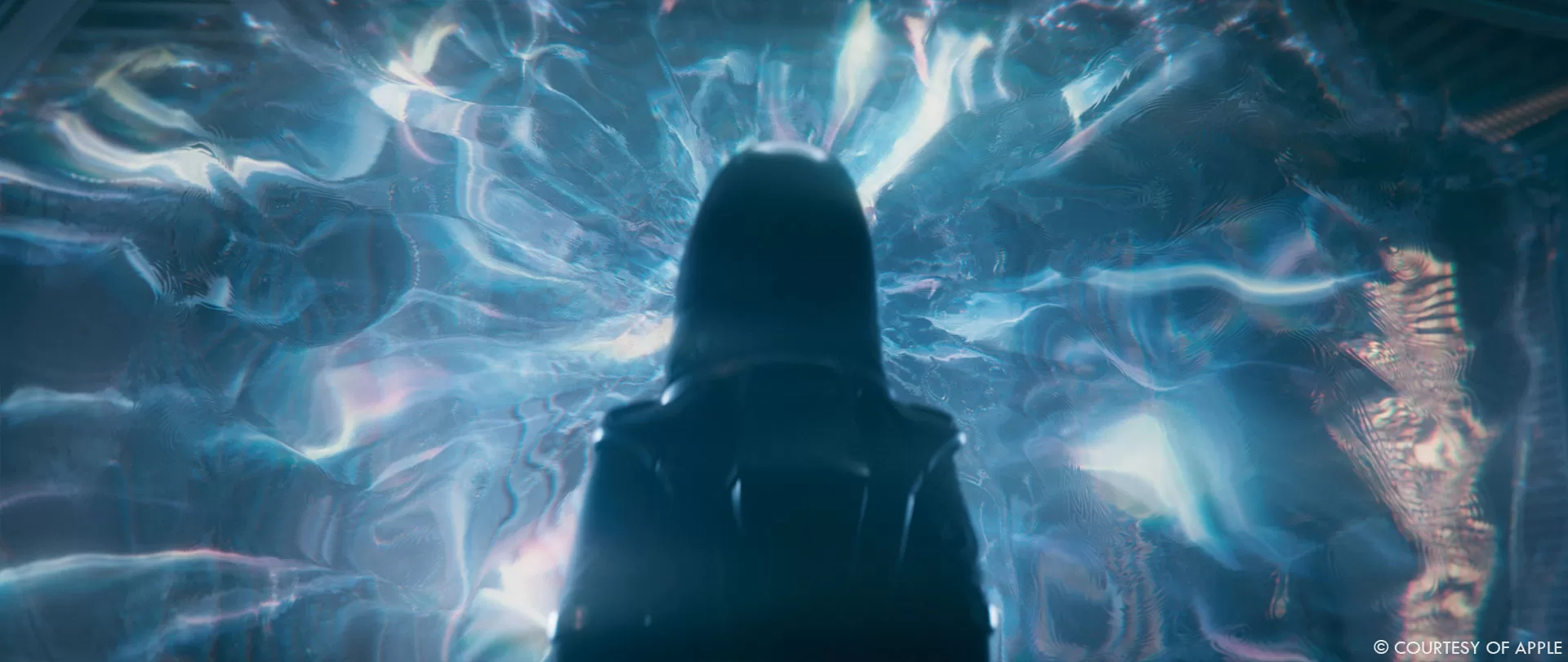
What are the sequences made by Framestore?
Framestore London worked on all scenes across the series of the Entity and Mistuki inside the Amazon ship, and the final scenes of the Idabel entity and portal that Trevante passes through to the mothership. Framestore New York completed the tunnel sequence in Episode 4, and the bioluminescent jungle scene in Episode 8.
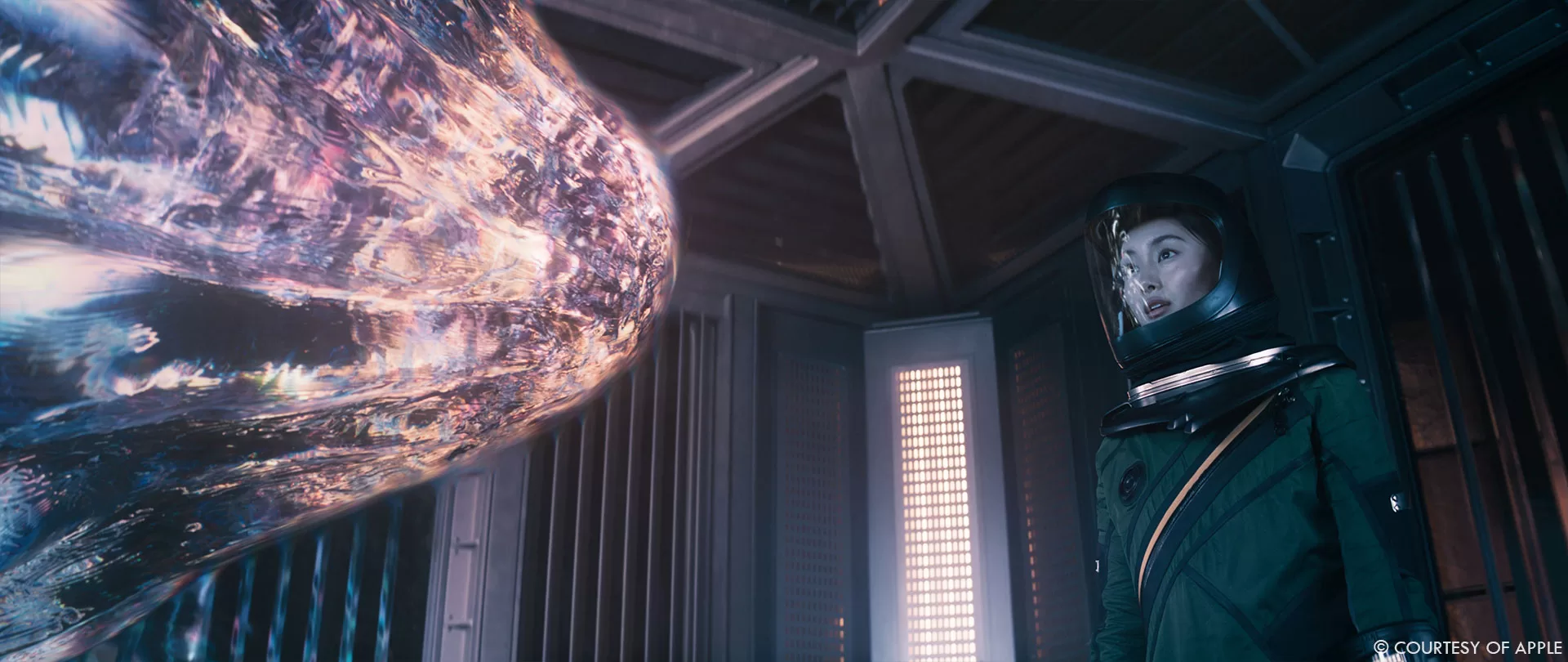
Can you elaborates about the design and creation of the alien Entity?
I really loved the cymatic structures and organic shapes represented in the Alien surfaces and technology in Season 1, and when coupled with the Entity. It seemed like the unifying link we’d need to run through all the different elements.The Entities dynamic surface flow is controlled by a series of interlinked cymatic and chladni patterns, which allowed us to control its emotional state by adding more or less complexity or frequency into these shapes. This cymatic structure then began to influence the other parts of the Entity, such as the array-like brain structure we can glimpse inside the surface – which was again 3D chladni structure. Zybrand Jacobs, the London FX supervisor on the show managed to create this fantastic and interlinked cymatic and chladni system.
We ended up driving a lot of things in this fashion to subtly link all the pieces together – the erratic dance of the crack-like sliver of light representing the Entity before it manifests is driven by the same cymatic systems, and the structures of Entity interior from later episodes all manifest these design cues. When the entity is wracked by pain and begin to loose surface cohesion – we were able to increase the frequency overlap on the surfaces to generate this high frequency tearing, in a similar way to what Mitsuki was doing in the show itself.
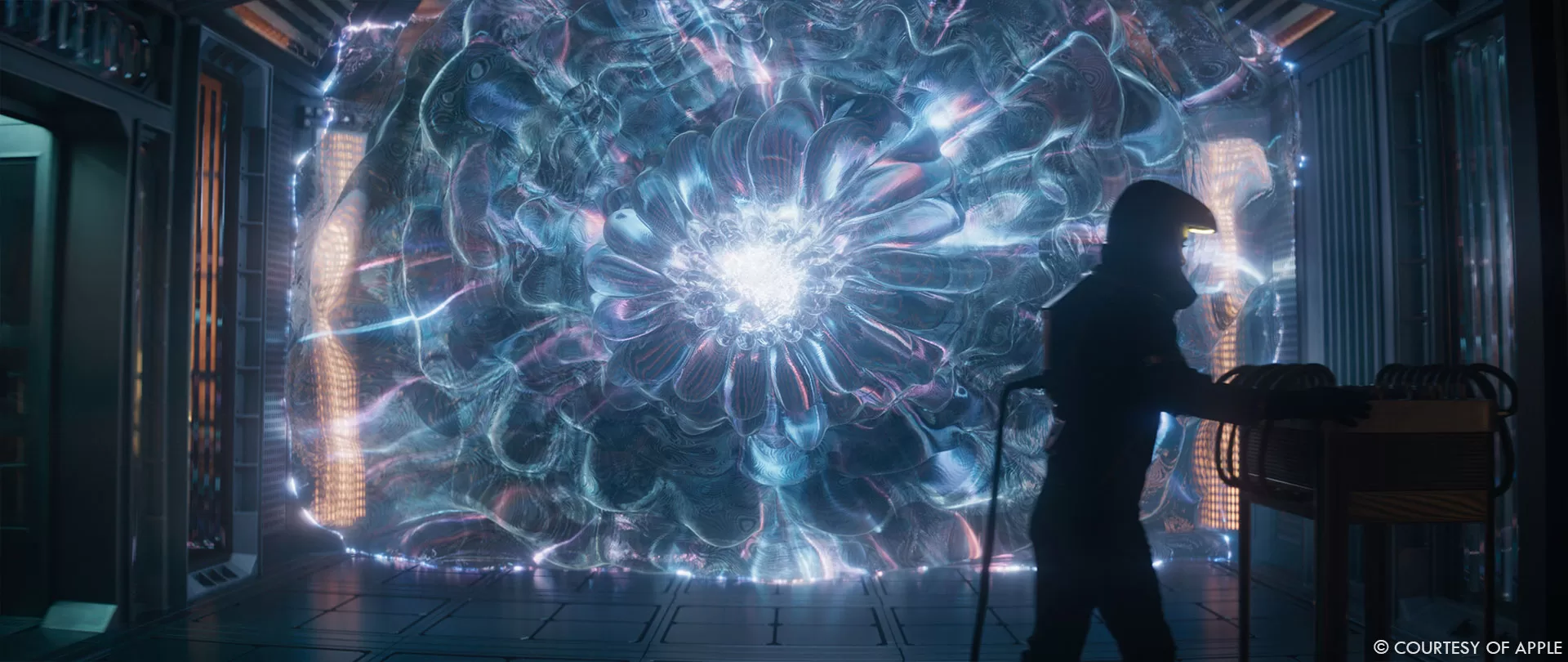
What kind of references and influences did you receive for this alien?
Underwater creatures have a whole range of strange and alien forms to draw inspiration from, bioluminescent Medusozoa was a great inspiration for the internal structure and shading of the Entity while creatures like the Cone Snail helped us find shapes and movement.
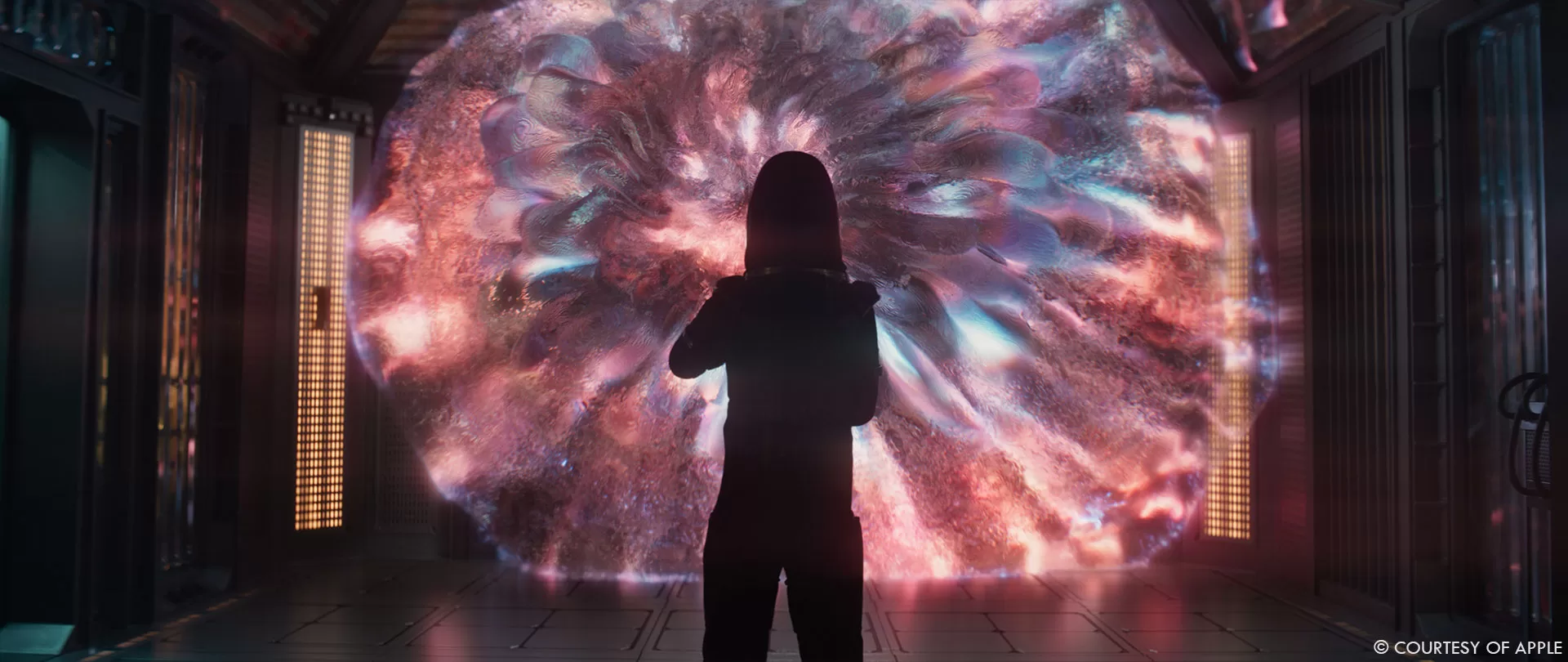
Can you tell us more about his animations challenges?
We were initially unsure of how abstract the motion and performance would need to be,and how much of a role animation would need to play. We very soon realised it was essential (as always!). It was a challenging ask for the animators – they worked out a fantastic language using cues like the entity’s volume swelling or contracting to convey emotion. If these primary shapes and volumes were able to carry the shot and emotion through the basic rig before the FX surfacing, colour and other contextual cues – we knew we’d hit the mark.
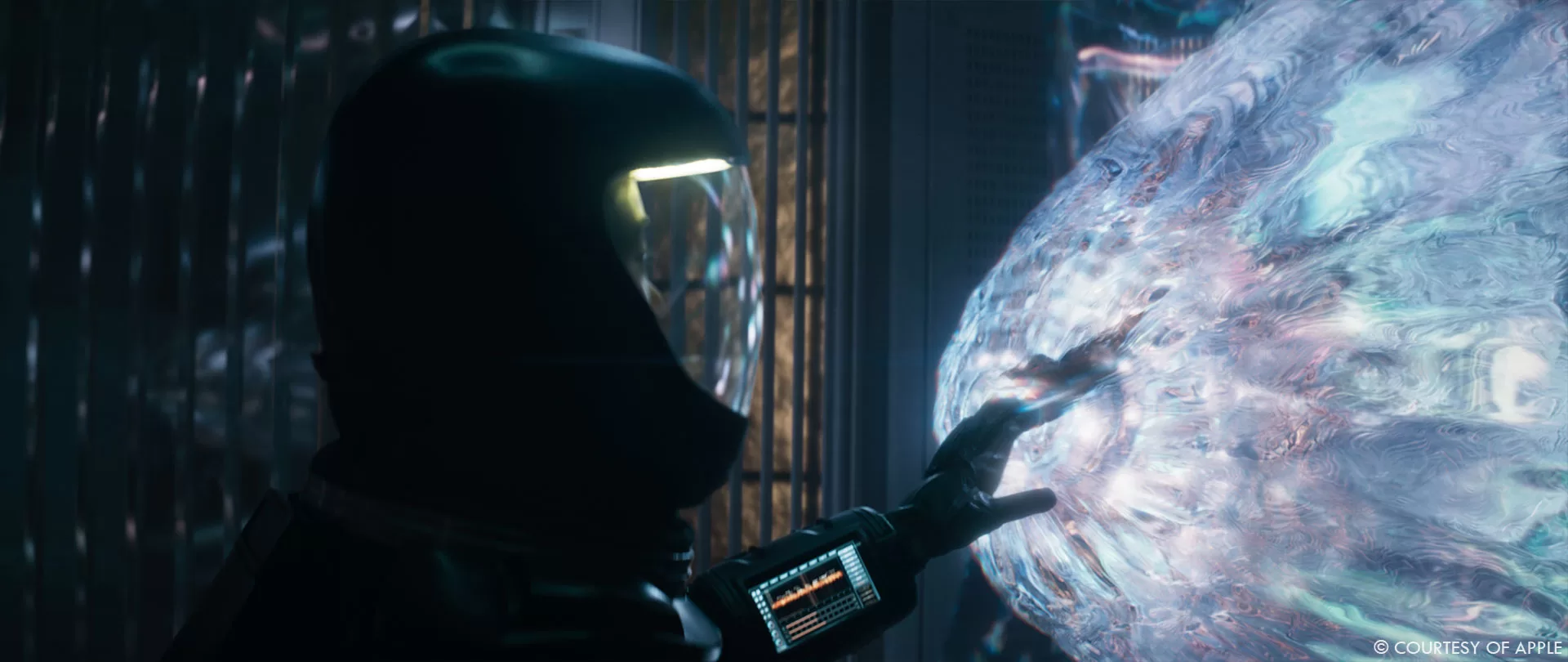
Due to his changing shape, how did you handle the rigging?
With the Entity being so fluid and needing to be able to become any shape the rigging team came up with a complex rigging system made from a mix of deformers, rigid and sliding controllers. The sliding controllers allowed animators to predefine a shape that entity could slide through to become. Additionally rigid controllers allowed for more discreet movements of the Entity and deformers could be added to create macro wave forms on the surface.
The Rig also had a system of locators that could be used to generate the « spine » inside the entity that would become the basis for defining the Entity’s head, and where simulations could derive a direction, the surface had various attributes stored on caching such as colour changes and texture speed which animators visually dialed in and passed to the FX setup.
A huge thanks to the animation and rigging team for bringing so much passion and personality to what was an unusual character brief!
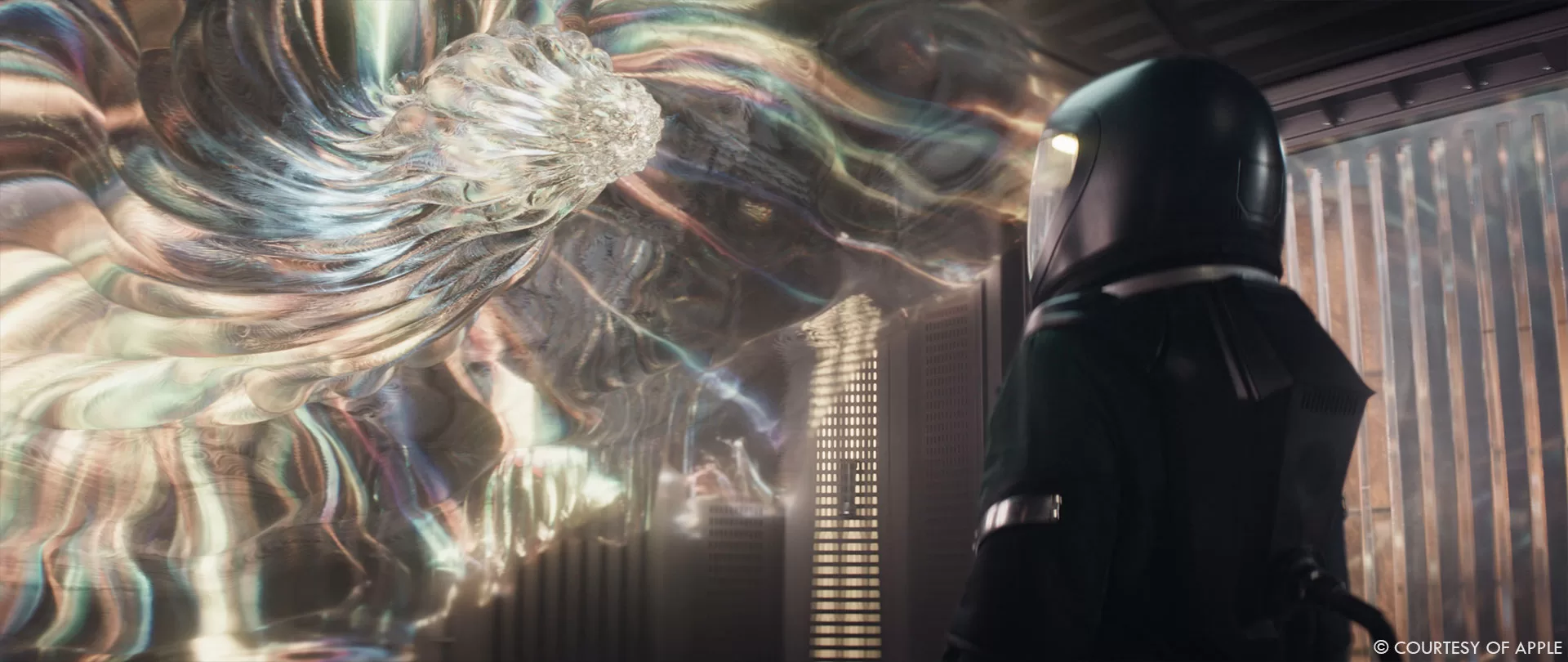
How does his luminous and transparency look affects your work?
One of the biggest challenges with refractive and semi-refractive surfaces is that so much of the look can be greatly affected by the space the surface is in, and something that looks amazing from one angle can nor have the same effect from a different direction. This was certainly the case with the Entity – we found ourselves having to constantly adjust and balance the relative detail/roughness of the surface and the amount of interior light in order to preserve the ‘feeling’ at various scales in camera. It was a case where the technically correct often didn’t look, so needed to be tuned in. The nice thing about the emissive light was that in most cases the Entity was the brightest object in the scene allowing us to make it the focus with a lot of nice lens effects to play up the dancing colour and intensities. Of course then in Episode 10 we had to move the Entity outside to full daylight, and start somewhat from scratch to get a balance and look that felt right.
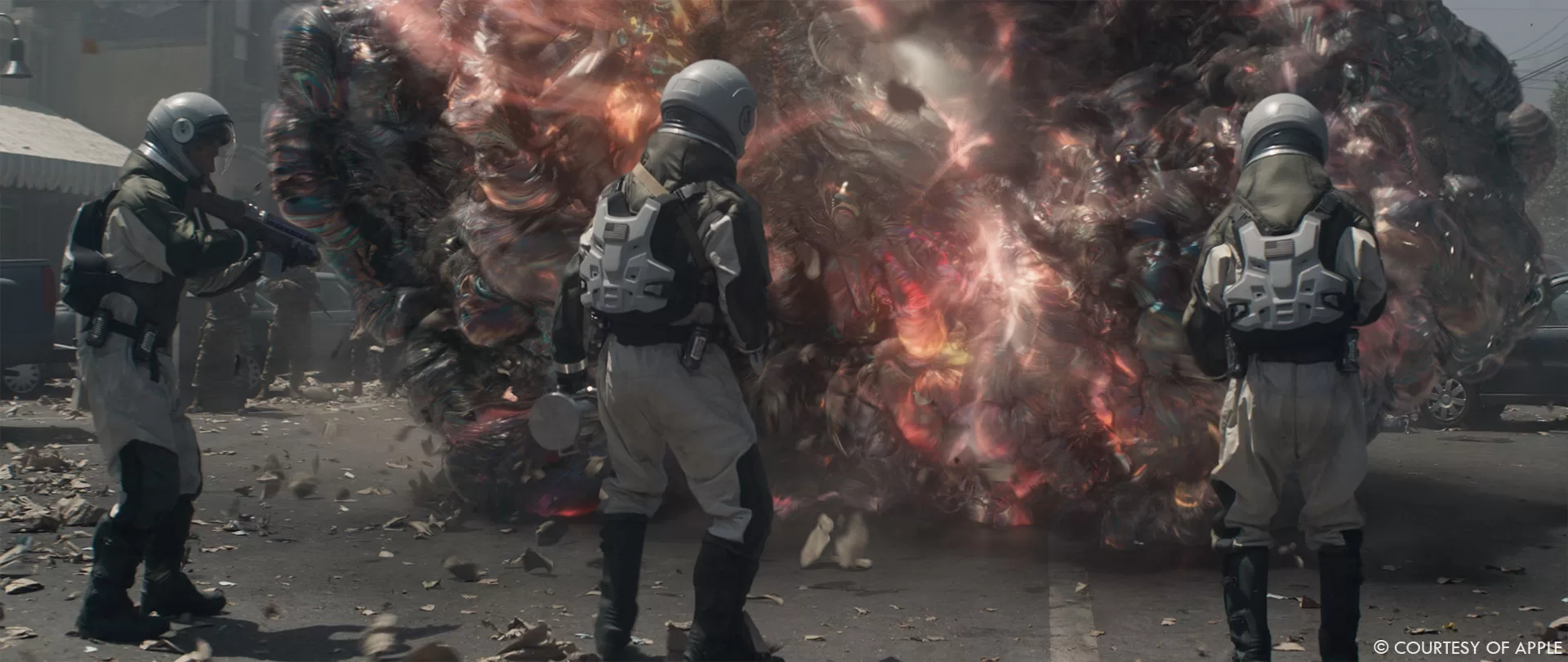
Can you tell us more about his internal lighting?
The interior of the entity is lit by three main aspects – the ‘brain, the ‘veins’ and the ‘ribbons’. The ‘brain’ is an array like 3D chladni pattern that forms and restructures based on the entity’s interactions. This connects directly to the interior ‘veins’, similar to a neural network. The ribbons are emissive bending and phasing shifts of coloured light. All these combined under the refractive surface gave the entity it’s blown glass like look.
Caspian Graca Da Silva and Erik Weaver-Pronk supervised the lighting and CG teams across the project, and managed the complexities of rendering emissive volumes and particles through large refractive surfaces. To have these then and cast light on to the environment the ribbons would be separated into their own render pass with ray switching to reduce the complexity of the internal rays being refracted, while a separate proxy mesh of the ribbons was also generated for diffuse contributions to the environment.
These three components and their looks were then used to tie the different entity stages together. So when you see the pre-entity sliver, it is emitting directly unrefracted ‘ribbons’ of light. And when we pass through the entity to the inside space, we see clearly the veins and internal structure as emissive textures inside.
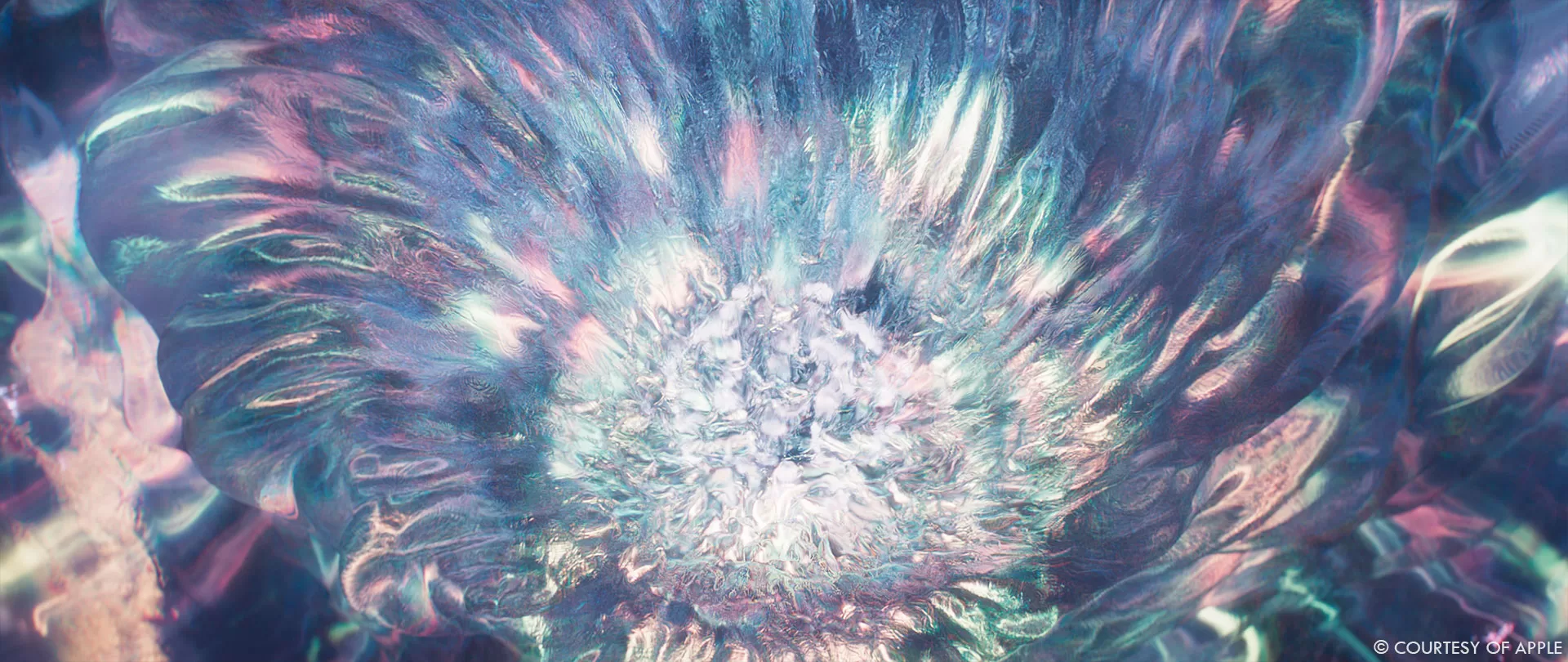
What was the main challenges with this alien?
Outside of the initial look development one of the main challenges was the sheer amount of variety and continual evolution the script called for. Every episode we saw the Entity it needed to progress and change, or do something new from the last time we saw it. Due to the volume of shots we were unable to approach each one as a bespoke setup, which meant a lot of work had to go into making a plausible system that could cover the required range.
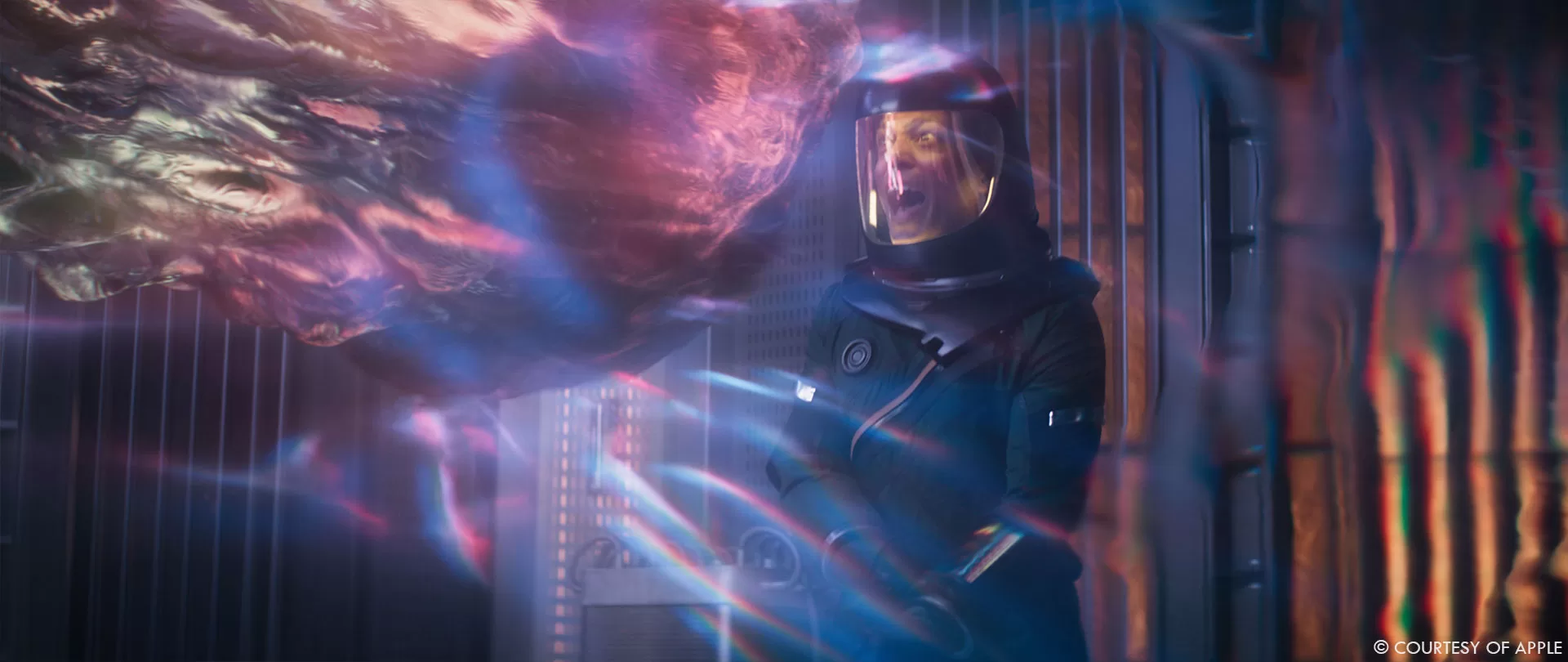
Which shot or sequence was the most challenging?
In episode 8, Mitsuki finally makes full contact with the Entity, and it completely envelopes her. This sequence was particularly challenging as we had to move between a variety of states and looks in rapid succession. We shift from calm, gentle external contact with Mitsuki, before enveloping her and encompassing the room entirely. Once inside, we’re in a sort of beautiful dream-like liminal space that slowly turns dangerous and erratic. Eventually, the forces generated get so extreme the entities surface teams itself apart – like a storm or the surface of a balloon ripping and stretching.
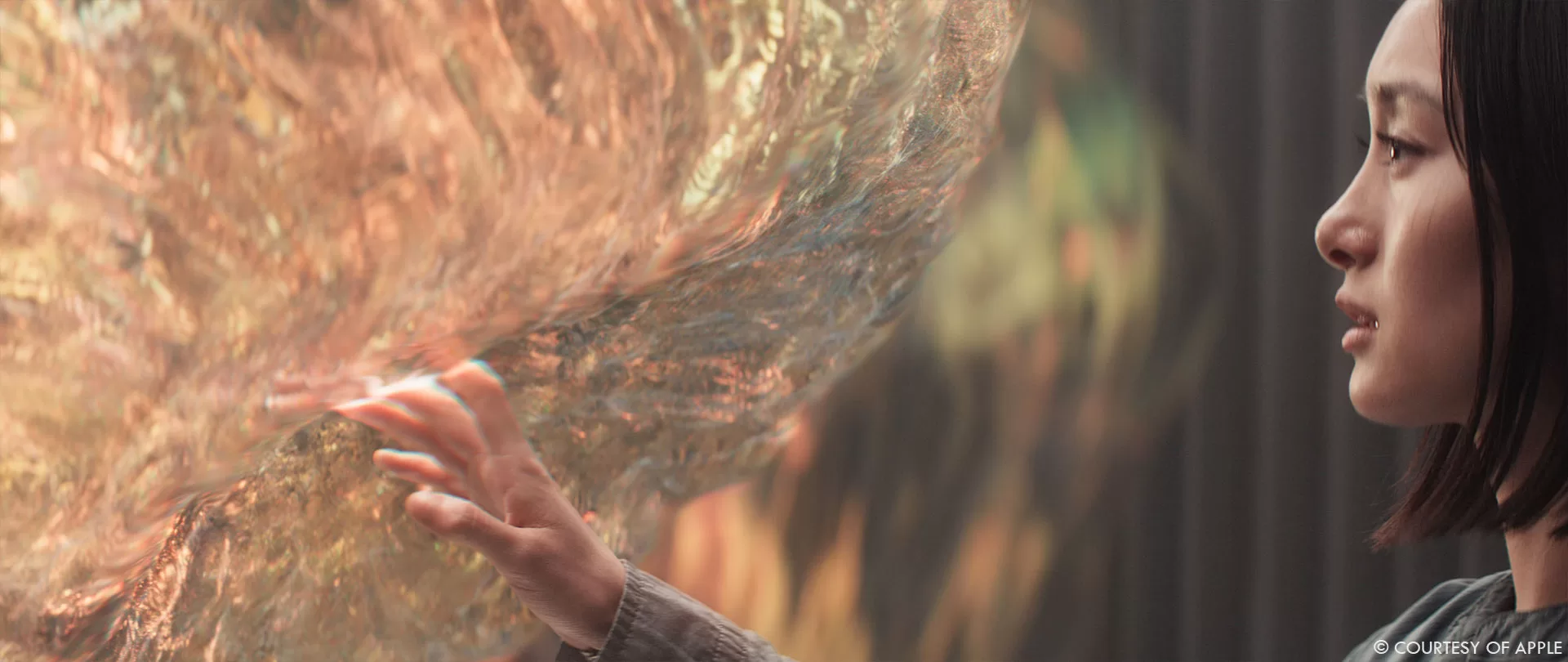
This really put all aspects of the team to work. To convey the weightlessness and force of the storm, the client shot a variety of underwater wig element plates which were then added as hair replacements for Mitsuki in the storm. These were combined with a large amount of 2D/3D distortion effects to simulate the bending and distortion of reality as the entity is destroyed.
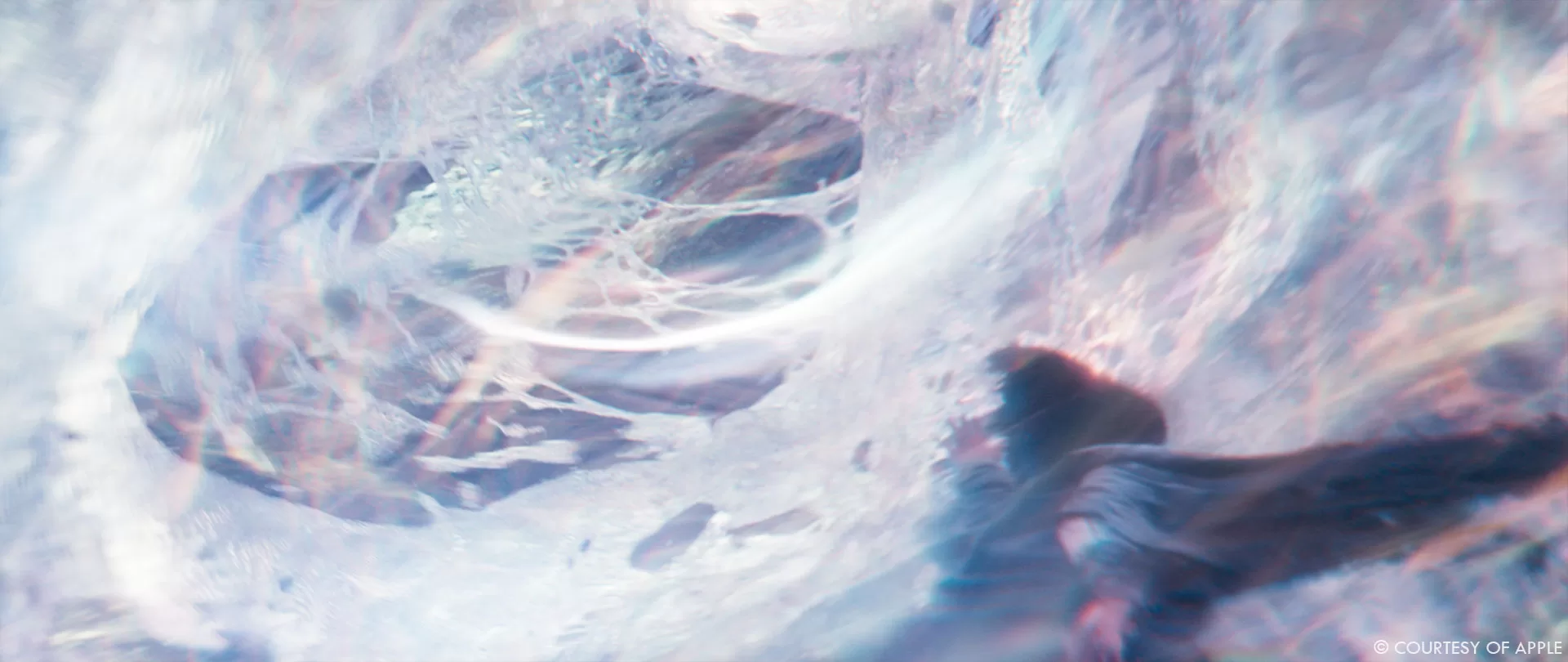
What is your favorite shot or sequence?
The scenes in episode 5 when Mitsuki is first truly communicating with the Entity is such a lovely nuanced scene. She takes her gloves off and makes first contact – it’s not the big action packed finale, but I think the animation, FX and comp teams really created something beautiful with a fantastic since of give and take between the cast and the Entity.
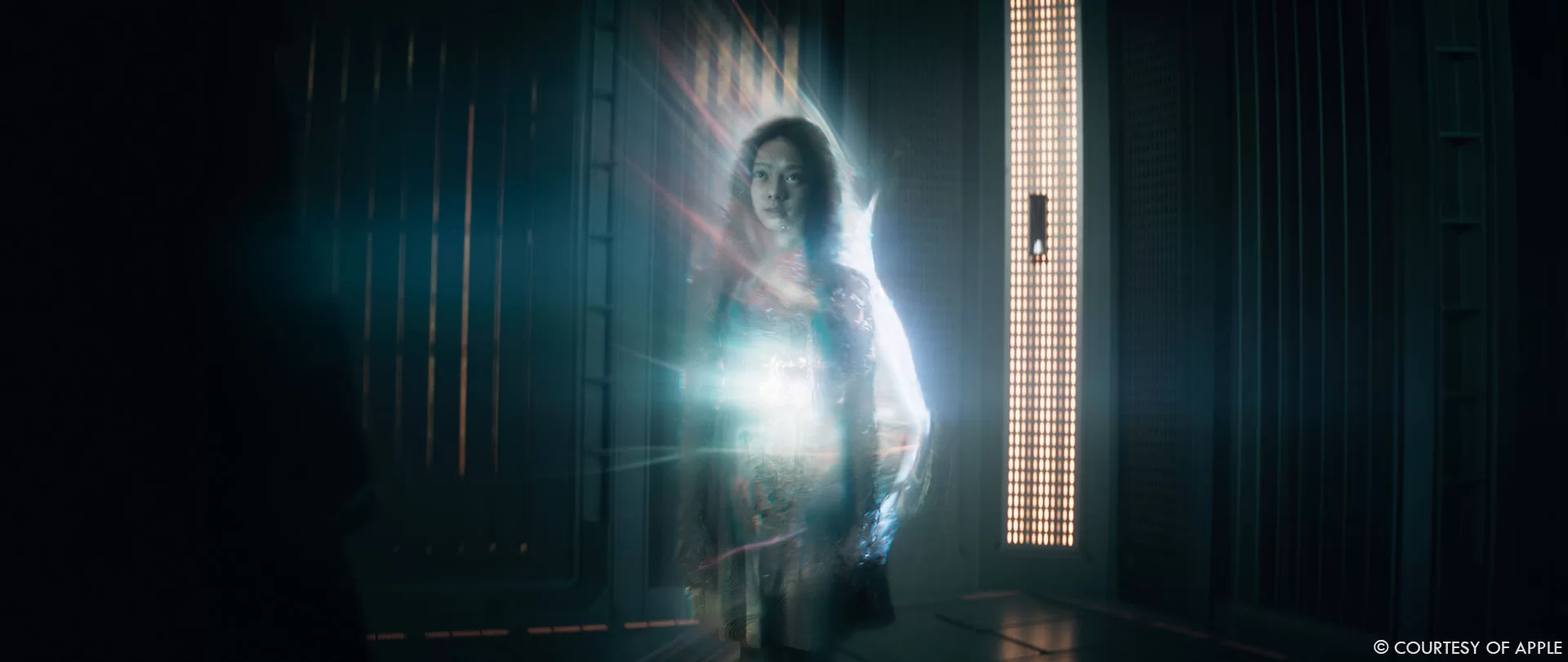
What is your best memory on this show?
Seeing the first surfacing setup and chladni patterns working on the surface of the entity – finally making that jump from pure concept and look development into something that can work in sequences and tell a story is always really exciting!
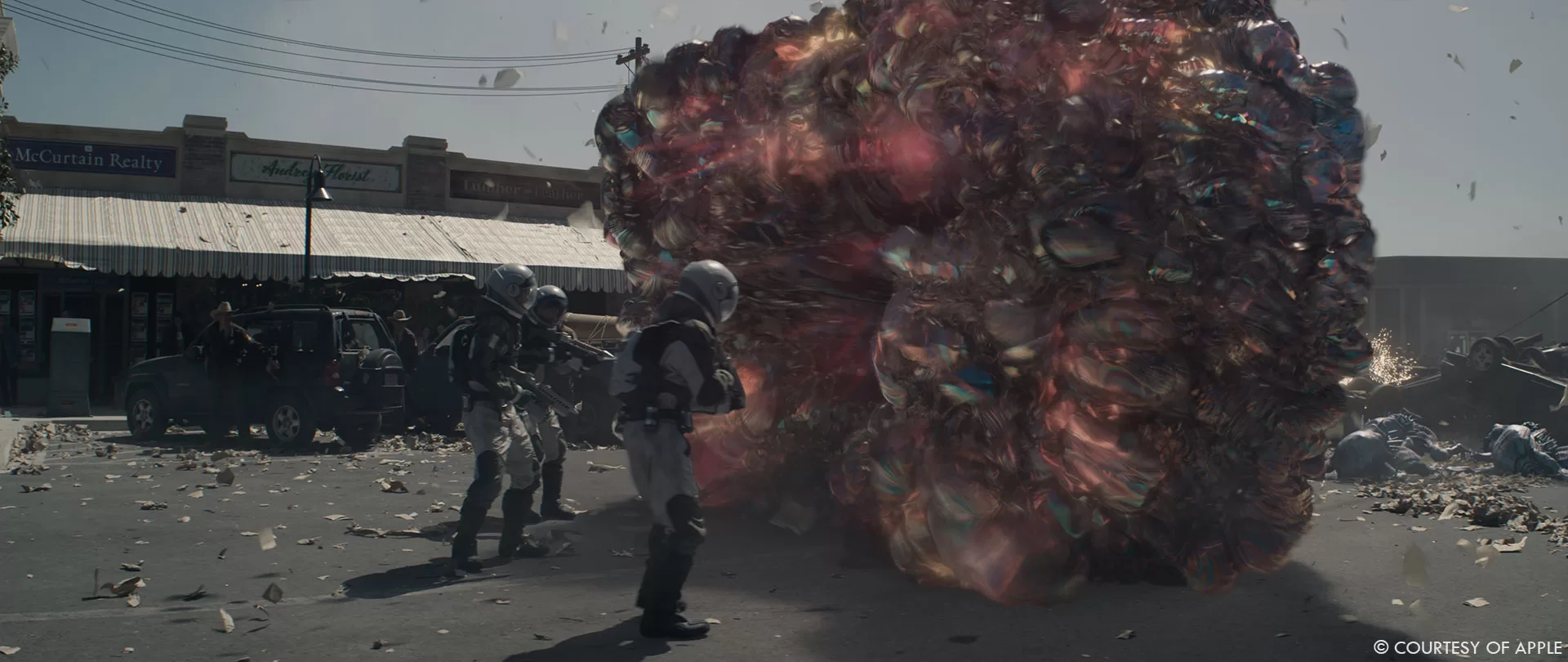
How long have you worked on this show?
All in, I worked with this show for about a year and a half
What’s the VFX shots count?
London delivered 366 finals, and New York: 93.
What was the size of your team?
At our peak we were working with somewhere around 75 people across offices.
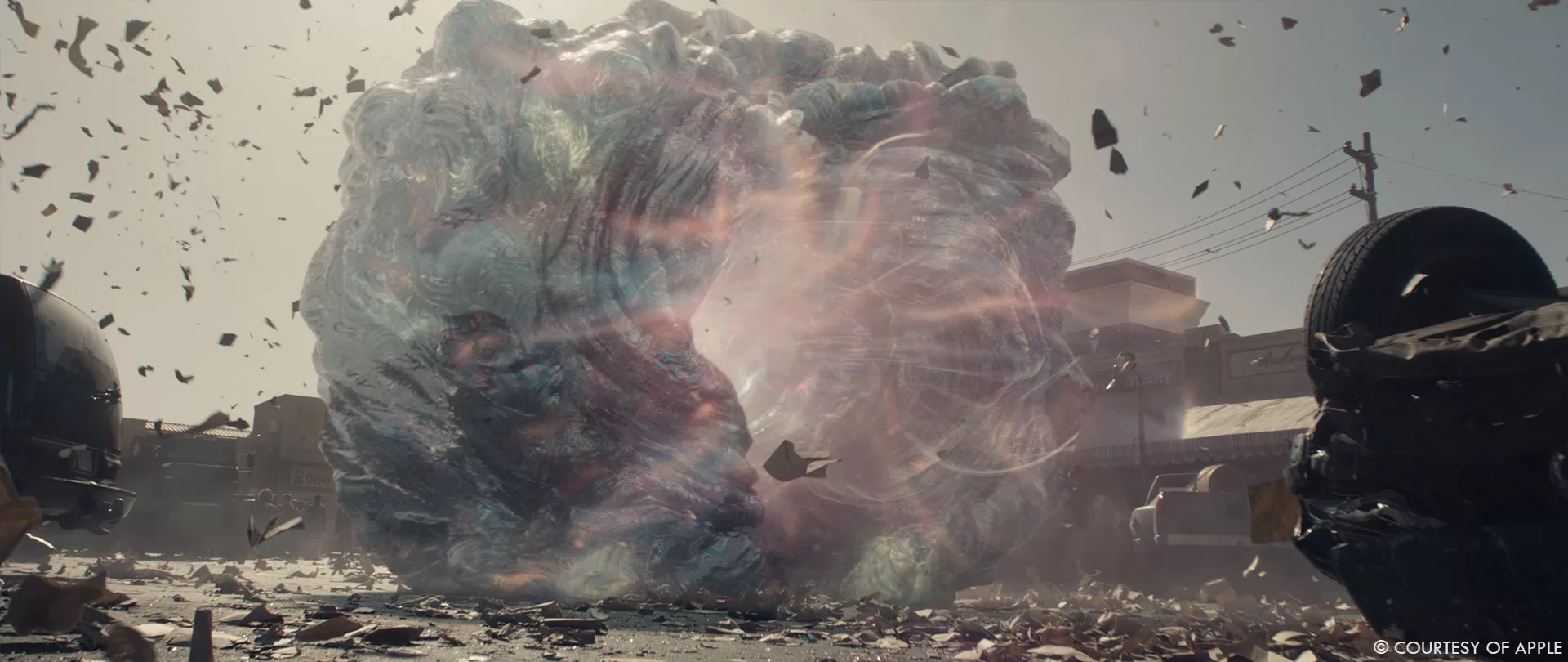
What is your next project?
Unfortunately under NDA for this – but looking forward to showing you in the future!
What are the four movies that gave you the passion for cinema?
Solaris (Steven Soderbergh), Akira, Dune and Jurassic Park (of course!)
A big thanks for your time.
WANT TO KNOW MORE?
Framestore: Dedicated page about Invasion Season 2 on Framestore website.
Erik Henry: Here’s my interview of Erik Henry, Production VFX Supervisor.
Apple TV+: You can watch Invasion on Apple TV+.
© Vincent Frei – The Art of VFX – 2024






